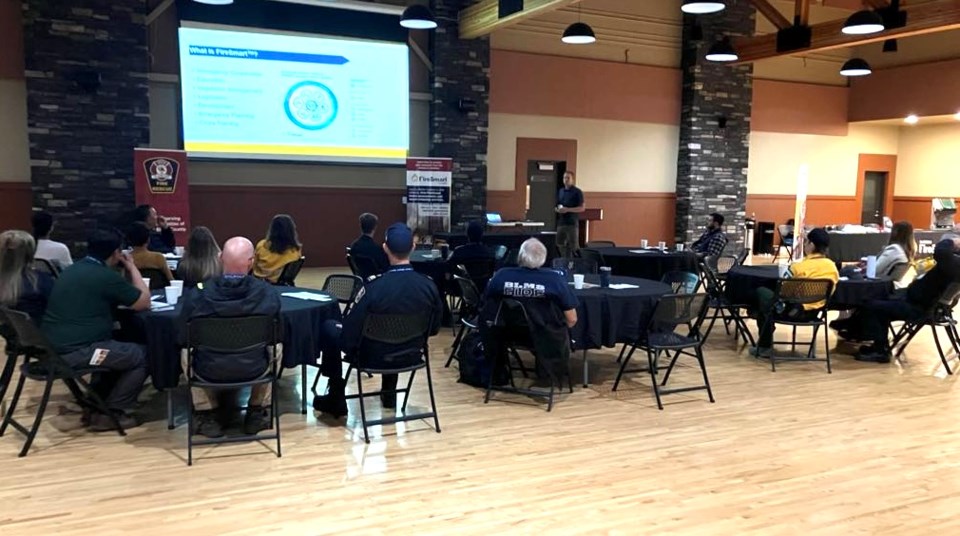LAC LA BICHE – A workshop focused on how to make homes more resistant against wildfires brought people to the Lac La Biche Bold Centre on June 5.
Mark Wiebe, a deputy fire chief with Lac La Biche County Fire Services, said by putting on the workshop, officials wanted to bring people who are building houses, or will be in the future, to learn how they can incorporate FireSmart principles into their new home construction.
The FireSmart program is administered in Alberta municipalities and nationwide to teach homeowners how to protect their properties from the risk of wildfire.
“We have a robust FireSmart program within the County,” Wiebe said.
Lac La Biche County Fire Services conducts free home assessments and free wood chipping services for residents as part of the FireSmart program. Residents of the municipality can sign up for the program by contacting the County.
“With that, you’ll get suggestions and tips as to how to make your home more resilient to wildfire when it is impacted by wildfire in the area,” he stated.
The risk of wildfire, Wiebe explained, is growing as people increasingly build homes in the forest area.
“The fire seasons do tend to be getting worse and worse,” he acknowledged.
There are basic precautions homeowners can take to make their properties more wildfire resilient. This includes taking a good look at home construction and ensuring that they have fire resistant materials on the roofs of their homes, walls, and remove combustible materials from areas around houses.
Representatives with the Alberta FireSmart program, Natural Resources Canada, and other agencies spoke at the workshop. The Cooperators insurance company was also on hand to answer questions about the insurance side of things.
Scott Vandermeer of FireSmart Alberta spoke to the group about wildfire construction, along with landscaping around buildings, and how built-in wildfire fuels such as vegetation interact with wild interface fires.
Vandermeer discussed the three priority zones around homes and properties, which focus on mitigating the risk of embers igniting a home, stopping fire from getting to it, and limiting the power of wildfires.
With the immediate zone (0-1.5 meters) around houses being the non-combustible zone, it is recommended to have no vegetation in that area, Vandermeer explained.
Homeowners, Vandermeer said, are advised to have no wood storage, bark mulch or coniferous trees in the Intermediate Zone (1.5-10 meters).
For the Extended Zone (10-30 meters), it is important to look at the broader community approach when protecting against wildfires, this includes fireguards and limbing of trees.
Vandermeer believes the FireSmart program is making a difference across the province, with more people getting on board with the initiative.
“Every little thing that we can do helps the greater community in becoming more wildfire resilient,” he said.


